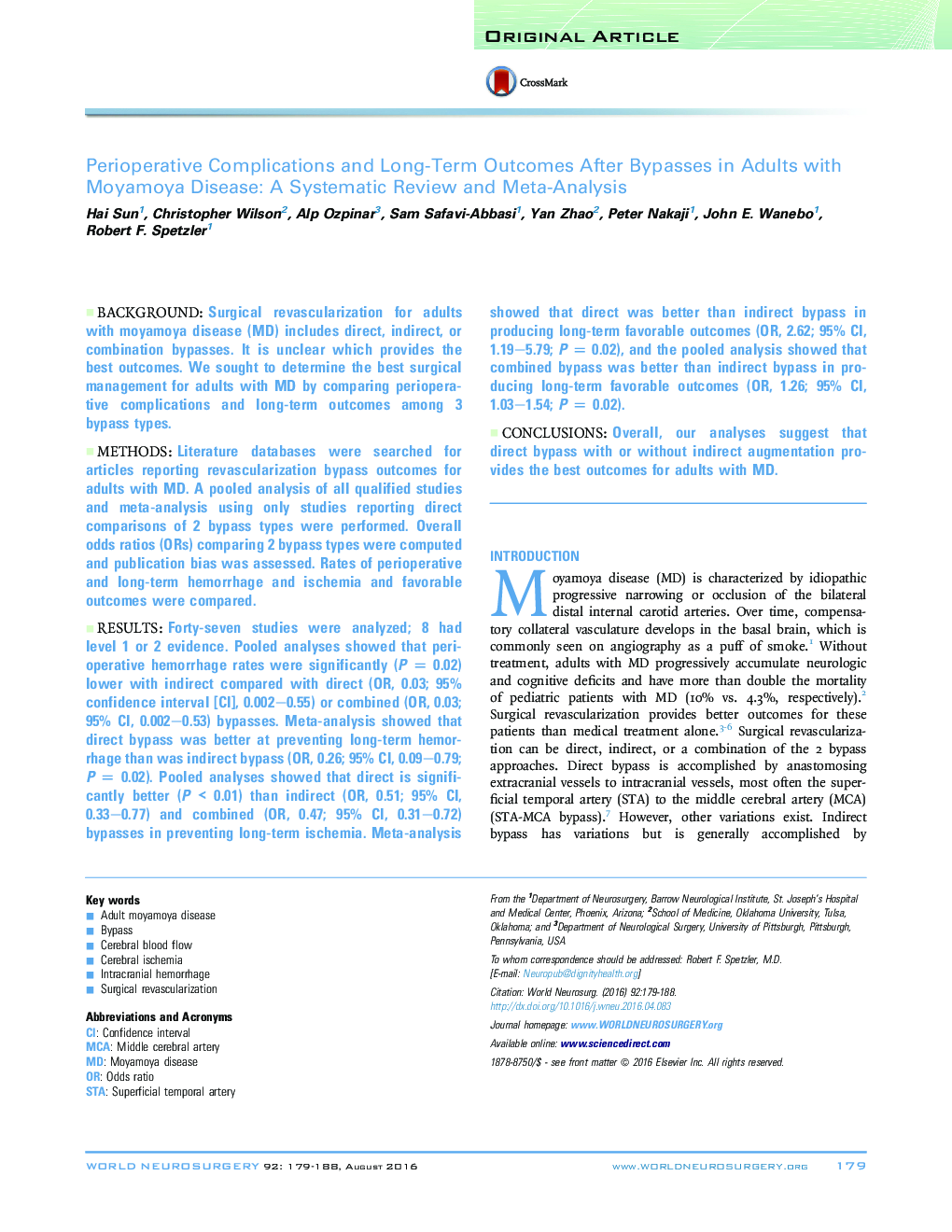| کد مقاله | کد نشریه | سال انتشار | مقاله انگلیسی | نسخه تمام متن |
|---|---|---|---|---|
| 3094700 | 1581463 | 2016 | 10 صفحه PDF | دانلود رایگان |
BackgroundSurgical revascularization for adults with moyamoya disease (MD) includes direct, indirect, or combination bypasses. It is unclear which provides the best outcomes. We sought to determine the best surgical management for adults with MD by comparing perioperative complications and long-term outcomes among 3 bypass types.MethodsLiterature databases were searched for articles reporting revascularization bypass outcomes for adults with MD. A pooled analysis of all qualified studies and meta-analysis using only studies reporting direct comparisons of 2 bypass types were performed. Overall odds ratios (ORs) comparing 2 bypass types were computed and publication bias was assessed. Rates of perioperative and long-term hemorrhage and ischemia and favorable outcomes were compared.ResultsForty-seven studies were analyzed; 8 had level 1 or 2 evidence. Pooled analyses showed that perioperative hemorrhage rates were significantly (P = 0.02) lower with indirect compared with direct (OR, 0.03; 95% confidence interval [CI], 0.002–0.55) or combined (OR, 0.03; 95% CI, 0.002–0.53) bypasses. Meta-analysis showed that direct bypass was better at preventing long-term hemorrhage than was indirect bypass (OR, 0.26; 95% CI, 0.09–0.79; P = 0.02). Pooled analyses showed that direct is significantly better (P < 0.01) than indirect (OR, 0.51; 95% CI, 0.33–0.77) and combined (OR, 0.47; 95% CI, 0.31–0.72) bypasses in preventing long-term ischemia. Meta-analysis showed that direct was better than indirect bypass in producing long-term favorable outcomes (OR, 2.62; 95% CI, 1.19–5.79; P = 0.02), and the pooled analysis showed that combined bypass was better than indirect bypass in producing long-term favorable outcomes (OR, 1.26; 95% CI, 1.03–1.54; P = 0.02).ConclusionsOverall, our analyses suggest that direct bypass with or without indirect augmentation provides the best outcomes for adults with MD.
Journal: World Neurosurgery - Volume 92, August 2016, Pages 179–188
